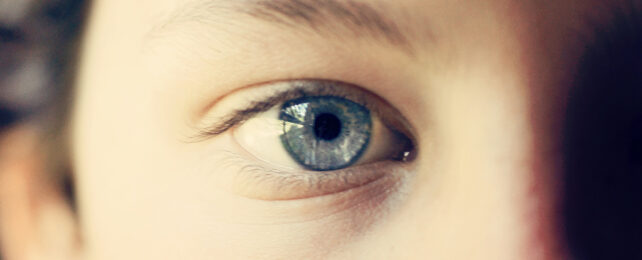Deep learning AI models could be used to screen for autism and check on the severity of the condition, according to new research – and all the AI might need is a photo of the subject's retina.
Previous studies have linked changes in retinal nerves with altered brain structures, and from there to Autism Spectrum Disorder ( ASD). The evidence suggests the eye really is a window to the brain, via the interconnectedness of the central nervous system.
"Individuals with ASD have structural retinal changes that potentially reflect brain alterations, including visual pathway abnormalities through embryonic and anatomic connections," researchers write in their new paper.
"Whether deep learning algorithms can aid in objective screening for ASD and symptom severity using retinal photographs is unknown."
In this study, a team from the Yonsei University College of Medicine in the Republic of Korea wanted to see if AI could spot ASD in retinal patterns. First, the model was trained on images where the AI was told if the subject had autism or not.
Then, the AI was asked to analyze the retinas of 958 children and teenagers with an average age of 7.8 years overall, half of whom had been diagnosed with autism. It managed a perfect score in identifying those who had autism and those who didn't.
The AI wasn't quite as good at predicting symptom severity from the retina photos – it was only accurate between 48-66 percent of the time. Still, there's lots of potential here to help kids get a useful assessment at an earlier age, with a shorter wait.
In this case, the researchers limited the training data to children and adolescents between the ages of 4 and 18, but they think that it could work on even younger kids as well – that's something that future studies might be able to look into.
"This question remains unexplored because the youngest age group in our sample was four years," write the researchers. "Retinal alterations in individuals with ASD may manifest even before retinal maturation."
In a study published last year, researchers were able to link the retina's response to light to cases of Attention Deficit Hyperactivity Disorder ( ADHD) and ASD, another example of how the eyes can act as a kind of mirror to an individual's brain activity.
Around one in 36 people is thought to be autistic, based on prevalence among eight-year-olds – and being aware of that diagnosis as early as possible can make a huge difference in young people understanding themselves and making their way through the world.
"The findings of this study suggest that retinal photographs may serve as a viable candidate for an objective method to screen for autism and possibly for symptom severity," write the researchers.
The research has been published in JAMA Network Open.
